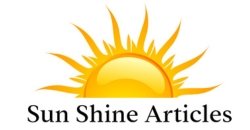Overheating in buildings has become a significant concern, especially with rising global temperatures and the push for energy efficiency. Poorly designed structures can trap excessive heat, making indoor spaces uncomfortable and even unsafe. To address this issue, the TM52 Overheating Assessment was developed as a guideline for evaluating and mitigating overheating risks in non-domestic buildings.
In this blog, we will explore what TM52 is, why it matters, how assessments are conducted, and how businesses and developers can comply with these standards.
For professional TM52 overheating assessments, visit Gradwell Group.
What is TM52 Overheating Assessment?
The TM52 Overheating Assessment is a framework developed by the Chartered Institution of Building Services Engineers (CIBSE) to evaluate overheating risks in non-residential buildings. It provides a clear methodology to determine whether a building’s design will result in uncomfortable indoor temperatures during warm weather conditions.
This assessment is particularly crucial for offices, schools, healthcare facilities, and other commercial spaces where excessive heat can reduce productivity, health, and well-being.
Why is Overheating a Concern?
Overheating is not just an issue of comfort—it can have serious implications for energy consumption, occupant health, and overall building performance. Some key concerns include:
- Reduced Productivity – Hot indoor temperatures can make workspaces uncomfortable, affecting concentration and efficiency.
- Health Risks – Prolonged exposure to high temperatures can cause dehydration, heat exhaustion, and other health issues.
- Increased Cooling Costs – Poorly designed buildings may rely heavily on air conditioning, increasing energy bills and carbon footprints.
- Non-Compliance with Regulations – Many building projects must meet thermal comfort requirements to gain planning approval.
By conducting a TM52 Overheating Assessment, designers and developers can ensure buildings remain comfortable while minimizing reliance on artificial cooling systems.
TM52 Overheating Criteria
The TM52 methodology evaluates overheating using three key criteria. A building fails the assessment if it exceeds any two of the following:
-
Criterion 1 – Hours of Exceedance
- Indoor temperatures should not exceed the comfort threshold (based on adaptive thermal comfort models) for more than 3% of occupied hours annually.
-
Criterion 2 – Daily Weighted Exceedance
- The intensity of overheating is measured across the entire day. If the cumulative discomfort level is too high, the building fails.
-
Criterion 3 – Upper Limit Temperature
- There is a strict maximum allowable temperature that should not be exceeded, ensuring that the space remains safe.
These criteria ensure that buildings are assessed based on both duration and intensity of overheating, making the methodology more comprehensive than simpler temperature-based tests.
How is a TM52 Overheating Assessment Conducted?
1. Thermal Modelling and Simulation
Specialist software is used to create a digital model of the building. This model accounts for:
- Building materials and insulation
- Window size, orientation, and shading
- Internal heat gains from occupants and equipment
- Local weather conditions
2. Testing Against TM52 Criteria
The model is run under simulated conditions to check if the building meets or exceeds the TM52 overheating limits.
3. Reporting and Recommendations
If overheating risks are identified, recommendations are made to improve the design, such as:
- Enhancing natural ventilation
- Using solar shading or high-performance glazing
- Optimizing thermal mass to absorb and release heat gradually
- Implementing passive cooling strategies
How to Prevent Overheating in Building Design
To ensure compliance with TM52 and create a comfortable environment, designers and developers should consider:
- Building Orientation: Positioning buildings to reduce excessive sun exposure.
- Shading Solutions: Installing blinds, external louvers, or reflective coatings on windows.
- Ventilation Strategies: Incorporating natural ventilation or mechanical systems for better airflow.
- Material Selection: Using high thermal mass materials to absorb excess heat during the day and release it at night.
- Energy-Efficient Cooling: Utilizing passive cooling techniques to minimize reliance on air conditioning.
Why is TM52 Compliance Important?
- Planning Approval: Many local authorities require overheating assessments for new developments.
- Sustainability Goals: Helps meet BREEAM and other energy-efficiency certifications.
- Lower Energy Costs: Reducing overheating minimizes the need for air conditioning, leading to long-term savings.
- Improved Comfort & Well-Being: Ensures occupants have a comfortable indoor environment, enhancing productivity and health.
Get a Professional TM52 Overheating Assessment
If you are designing or developing a building, a TM52 Overheating Assessment is essential to ensure compliance and comfort. Working with experts can help identify risks early and recommend effective solutions.
For a professional assessment, visit Gradwell Group to get expert advice and services.
Conclusion
The TM52 Overheating Assessment is a critical tool in modern building design, helping prevent overheating-related issues while maintaining energy efficiency. By ensuring compliance with TM52 guidelines, developers can create comfortable, sustainable, and cost-effective buildings that benefit both occupants and the environment.
If you are planning a project, ensure you integrate overheating risk assessments early in the design process to avoid costly modifications later. Contact Gradwell Group today to learn more about how you can optimize your building for thermal comfort and efficiency.

